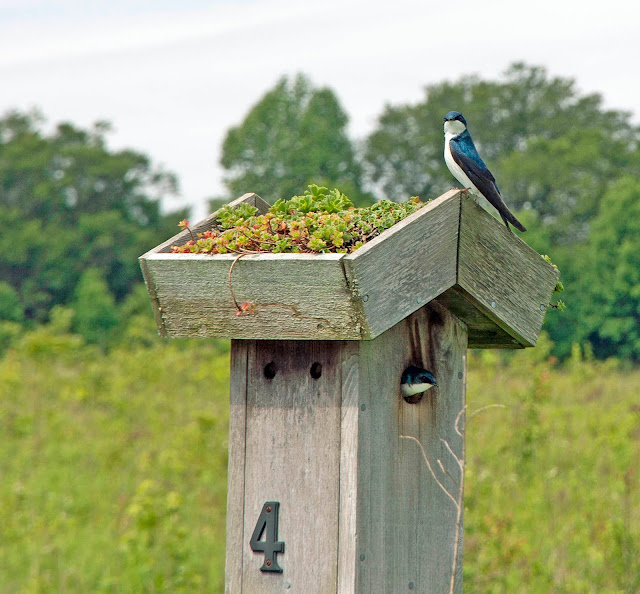I wrote recently about a "meadow" trip that I took. Meadows are now the new thing to promote among environmentalists.
First, what is a meadow? According to Merriam-Webster, the word's origins are: "Middle English medwe, medowe "grassland kept for hay, pasture field," going back to Old English mǣdwe, ... going back to West Germanic *mēdwō- (whence also Old Frisian mēde "pasture, meadow," Middle Dutch māde, mēde), "": most simply a flat land covered in grass. Some definitions include hay or alfalfa, but I am talking about fallow or unused lands.
Let us use a definition by some Sierra Nevada scientists (my favorite group of people):
A meadow is an ecosystem type composed of one or more plant communities dominated by herbaceous species.
It supports plants that use surface water and/or shallow ground water (generally at depths of less than one meter).
Woody vegetation, like trees or shrubs, may occur and be dense but not dominant.
Yes, a meadow can be for animals to graze or it can be fallow and maybe mowed once or twice a year to keep down fire threats to nearby communities or private lands. A meadow can also be a wetland community edging other bodies of water.
We have lost many wild meadows because of our changes to this land.
A more bucolic image comes to mind for most of us with flowers and flying insects allowing romantic long walks with vast views.
But let me tell you about the reality of "managed meadows" first and then we can discuss the issues later.
Why? Why does mankind want to restore meadows to certain areas? If you asked my husband he would say it is for the quail. He misses the song of the quail. Not good enough? Well, meadows can store rainfall and release it over time to other areas, protecting against erosion. Meadows maintain groundwater storage which is a precious resource that is disappearing in many areas. Meadows are sponges that filter out pollutants as well. Meadows are also homes for rich biological diversity including many endangered insect and plant species.
We toured this meadow in early spring before its beauty could surprise us.
It involved about 80 acres that are managed by a consortium of government and college agencies. It is a study that has been conducted over a number of years. It seems to involve a lot of work.
Routine plowing of the soil to disturb some plants and to provide habitat for ground birds and to break up dense clumps of grasses that small birds cannot walk through.
Routine burning of sections of the land in fall to minimize invasives, monoculture, etc. We also visited the Longwood Gardens meadow below.
The above sign was at the Longwood Gardens meadow for education to the public.
Above is, perhaps, an invasive version of Helianthus (related to the sunflower) that they are letting go over a substantial area...perhaps for the beauty of watching the goldfinch in fall?
Large paths are cleared for scientists and students to work, machinery to move and visitors to walk.
Longwood created birdhouses for some of their insect eaters.
Well, that is enough for now. Maybe next will be a post of my view of the pros and cons.









I just watched a wonderful documentary, "The Biggest Little Farm" and learned what an important function grasses play in ecosystems, such as in these meadows you describe. I'm so glad that people are beginning to realize how interconnected it all is. Great post, Tabor. How about those pros and cons? :-)
ReplyDeleteSoon, perhaps. So busy with so many things right now.
DeleteI'll be interested on the pros and cons too. I was surprised that plowing was part of maintaining a meadow.
ReplyDeleteIt would be nice if we could get rid of the tiresome sameness of lawns in the burbs and instead have that area look more like meadowland would look. Lots less chemicals dumped in the name of weed control.
ReplyDeleteIt seems like a very positive thing to me.
ReplyDeleteThere was a meadow called the Long Meadow on my grandparents’ property when I was a child. It bordered a river, was long and flat, grew grass for hay and was bordered by wild flowers and bushes. We often ran there and swam in the river nearby. I loved that meadow. Great memories of a meadow for me.
ReplyDeleteMeadow is a beautiful word...one that brings with it a sense of calm, stillness, beauty...
ReplyDeleteMeadows are also for kids to run through to pick flowers for their moms. I understand the need to protect habitats and such, but the bans of not picking up a stone is ridiculous. Picking flowers, unless they are endangered, that also is a very sad thing to me. Parents told us kids what to pick and what not to pick to protect plant growth, and give us the chance to share Nature with love ones.
ReplyDeleteSorry, that should be...not picking flowers is sad
DeleteWe have natural meadows behind us and our cattle use it. When we are wise with limiting how much they can be there, they are good for the land. Their hooves do break it up. I read though that most natural meadows were due to beavers and how they operate on a stream. The one behind us looks totally natural with many animals sharing it (the biggest being elk) but it was manmade just long ago.
ReplyDeleteI didn't know anyone was interested. There were a few around here I was really fond of, but they are gone now.
ReplyDelete